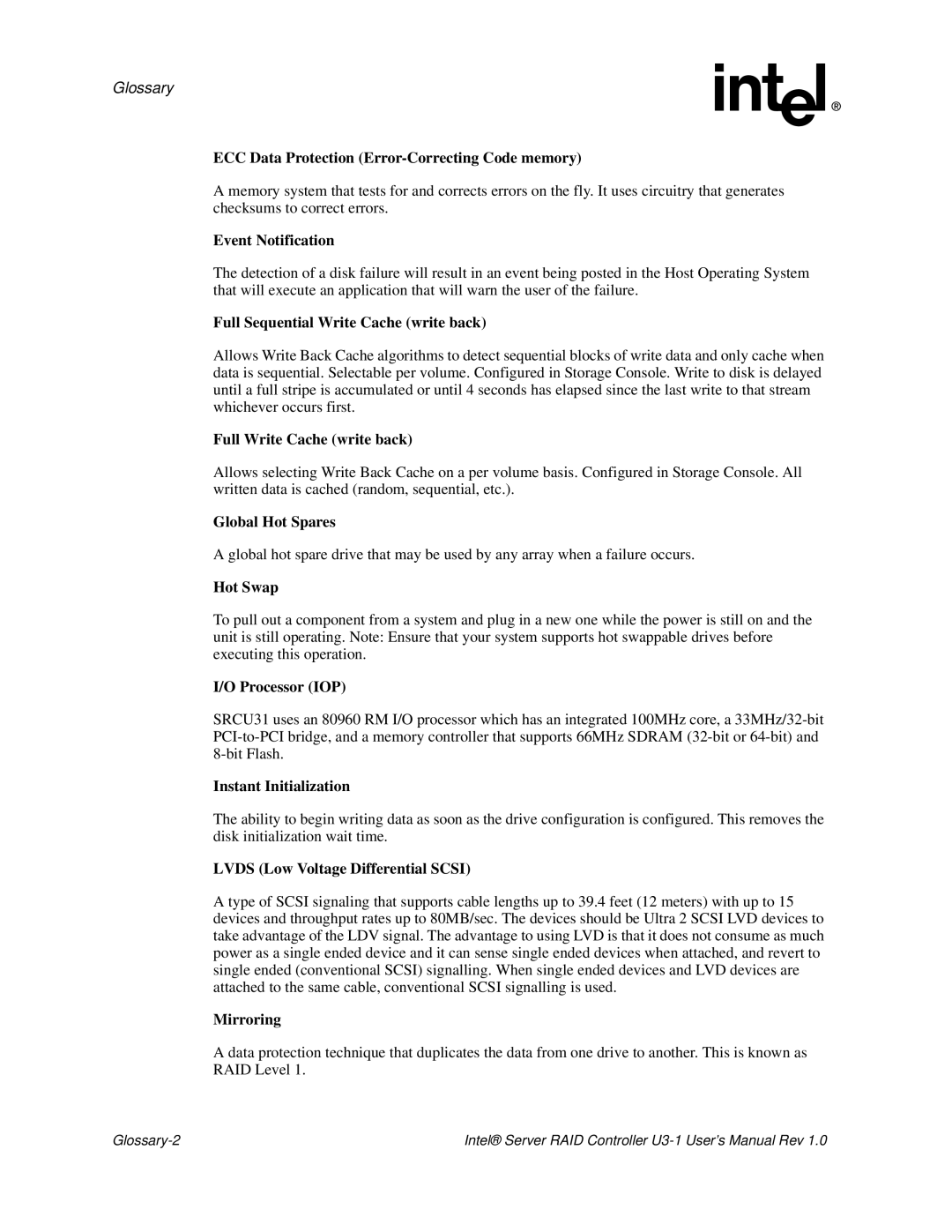
Glossary
ECC Data Protection (Error-Correcting Code memory)
A memory system that tests for and corrects errors on the fly. It uses circuitry that generates checksums to correct errors.
Event Notification
The detection of a disk failure will result in an event being posted in the Host Operating System that will execute an application that will warn the user of the failure.
Full Sequential Write Cache (write back)
Allows Write Back Cache algorithms to detect sequential blocks of write data and only cache when data is sequential. Selectable per volume. Configured in Storage Console. Write to disk is delayed until a full stripe is accumulated or until 4 seconds has elapsed since the last write to that stream whichever occurs first.
Full Write Cache (write back)
Allows selecting Write Back Cache on a per volume basis. Configured in Storage Console. All written data is cached (random, sequential, etc.).
Global Hot Spares
A global hot spare drive that may be used by any array when a failure occurs.
Hot Swap
To pull out a component from a system and plug in a new one while the power is still on and the unit is still operating. Note: Ensure that your system supports hot swappable drives before executing this operation.
I/O Processor (IOP)
SRCU31 uses an 80960 RM I/O processor which has an integrated 100MHz core, a
Instant Initialization
The ability to begin writing data as soon as the drive configuration is configured. This removes the disk initialization wait time.
LVDS (Low Voltage Differential SCSI)
A type of SCSI signaling that supports cable lengths up to 39.4 feet (12 meters) with up to 15 devices and throughput rates up to 80MB/sec. The devices should be Ultra 2 SCSI LVD devices to take advantage of the LDV signal. The advantage to using LVD is that it does not consume as much power as a single ended device and it can sense single ended devices when attached, and revert to single ended (conventional SCSI) signalling. When single ended devices and LVD devices are attached to the same cable, conventional SCSI signalling is used.
Mirroring
A data protection technique that duplicates the data from one drive to another. This is known as RAID Level 1.
Intel® Server RAID Controller |
